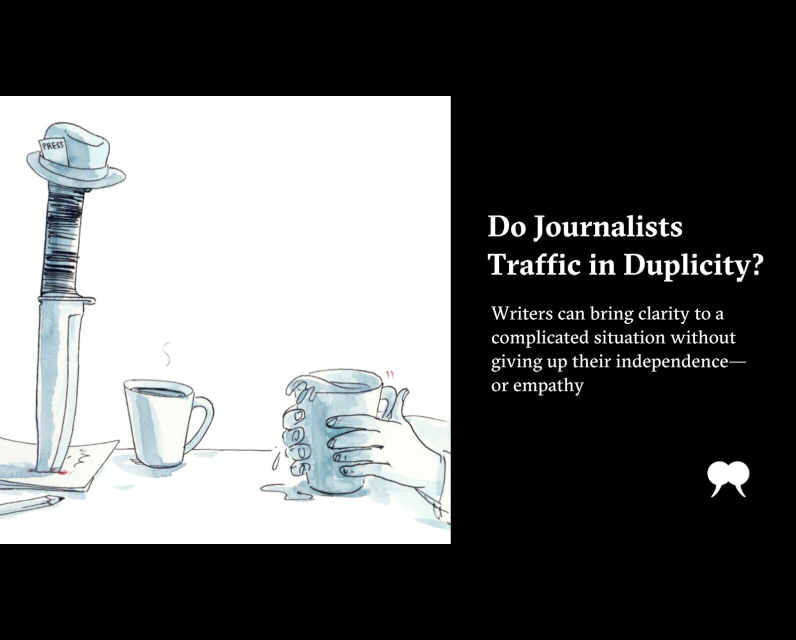Source Feed: Walrus
Author: Carmine Starnino
Publication Date: May 23, 2025 - 06:30
Do Journalists Traffic in Duplicity?
May 23, 2025

JANET MALCOLM’S most famous book is The Journalist and the Murderer. Much of its notoriety stems from its searing opening line: “Every journalist who is not too stupid or too full of himself to notice what is going on knows that what he does is morally indefensible.” Why morally indefensible? Because of journalism’s inherent duplicity. For Malcolm, a writer for The New Yorker from 1963 until her death in 2021, the reporter wins over her sources—pretending, for the sake of access, to be their friend—only to betray them by telling the truth as she comes to understand it. At its heart, every significant piece of reporting is basically a business deal gone bad.
Among the marvels of this month’s cover story, “Zakaria Amara’s Second Chance,” is that it reverses that transaction. Michelle Shephard is a former national security reporter who led the coverage of what became known as the Toronto 18—eighteen Muslim men and youth caught planning a terrorist attack in 2006. Years of trial followed, and many older members got jail time. Twenty-four-year-old Zakaria Amara, one of the leaders, was handed a life sentence. When Amara was released on parole in 2022, after serving nearly seventeen years in prison, Shephard wanted to explore why he became radicalized, and then violent, and how—as he claimed—he was rehabilitated in prison. He agreed to be interviewed, along with his family and others.
At this point, if we accept Malcolm’s terms, Shephard commits the besetting sin of her profession: she gains the subject’s trust and he cedes control of his narrative as she sets out to test his story. It is a contractual arrangement that can only end in one side being sacrificed in the pursuit of objectivity (after journalists call, Malcolm writes, subjects “are astonished when they see the flash of the knife.”) But Shephard flips the script: she flashes a knife at her side of the story too. By revisiting the central figure of a case she helped bring to national attention, Shephard explores not just Amara’s transformation but her own complicity in shaping his public image.
Shephard goes beyond Amara’s search for redemption to lay bare the tension between storyteller and subject, observer and participant, in shaping narratives of extremism. More: the story reckons with how people like herself, who report on terrorism, bear responsibility in facilitating or withholding public forgiveness.
For Malcolm, journalism “depend[s] for its life on a kind of fuzziness and murkiness, if not utter covertness, of purpose.” Shephard shows that journalists can bring clarity, if not compassion, to a complicated situation without giving up their independence. Her masterwork of empathetic storytelling deserves, like Malcolm’s, to be taught in journalism classes, and probably will be. I couldn’t be prouder of the result. The post Do Journalists Traffic in Duplicity? first appeared on The Walrus.
Inside a hotel event hall in the centre of the province, 12 Alberta flags hung around the large room. But nowhere to be found was the red and white maple leaf. Around 400 people had gathered at the Red Deer Resort and Casino Conference Centre for a town hall hosted by the newly re-named Republican Party of Alberta to promote the province’s growing independence movement.
May 24, 2025 - 22:26 | Liam Newbigging | The Globe and Mail
Another long overtime loss has put the Ottawa Charge on the ropes. Read More
May 24, 2025 - 22:21 | Don Brennan | Ottawa Citizen
This year marks the 34th annual Cathedral Village Arts Festival, and more than ever, people want to shop local and take in what vendors have to offer.
May 24, 2025 - 21:24 | Andrew Benson | Global News - Canada


Comments
Be the first to comment